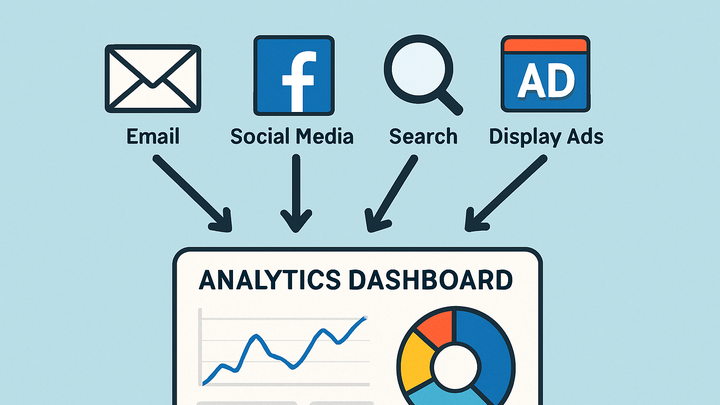Published on 2025-06-28T03:53:55Z
What is Cross-Channel Attribution? Examples for Cross-Channel Attribution
Cross-Channel Attribution in analytics is the process of assigning credit to different marketing interactions across various channels in the customer journey. Rather than focusing on a single touchpoint, it provides a comprehensive view of how channels like social media, email, paid search, and display ads collectively drive conversions. Utilizing tools such as Google Analytics 4 (GA4) and privacy-friendly solutions like PlainSignal, marketers can gather data without compromising user privacy. By comparing different attribution models - first-touch, last-touch, linear, and data-driven - teams can identify which channels contribute most effectively to business goals. Accurate cross-channel attribution empowers data-driven budget allocation, enhances campaign optimization, and demonstrates true return on investment. This approach is fundamental for modern marketing analytics, where multi-device and multi-channel customer journeys are the norm.
Cross-channel attribution
Allocating credit across multiple marketing touchpoints to measure each channel's impact on conversions and optimize ROI.
Overview of Cross-Channel Attribution
Cross-channel attribution involves assigning conversion credit to each marketing touchpoint across multiple channels in the customer journey. This holistic approach helps analysts understand how social, email, paid search, and display ads interact to drive results.
-
Definition
Allocating credit to marketing interactions across different channels to reflect their contribution to conversions.
-
Why it matters
Cross-channel attribution provides a unified perspective on marketing performance, avoiding the pitfalls of single-channel analysis.
-
Holistic insights
Reveals how channels work together rather than in isolation.
-
Budget optimization
Helps allocate marketing spend to the most effective touchpoints.
-
Common Attribution Models
Different models assign conversion credit based on varying logic, each suited to different analysis needs and business goals.
-
First-touch attribution
Gives full credit to the initial touchpoint that started the customer journey.
-
Last-touch attribution
Assigns all credit to the final interaction before conversion.
-
Linear attribution
Distributes credit equally among all touchpoints in the conversion path.
-
Time-decay attribution
Gives more credit to interactions closer in time to the conversion event.
-
Position-based attribution
Allocates a higher percentage of credit to the first and last touchpoints, with the remainder spread evenly among middle interactions.
-
Data-driven attribution
Uses machine learning to assign credit based on the incremental impact of each touchpoint.
Implementing in GA4 and PlainSignal
Analytics platforms like GA4 and PlainSignal support cross-channel attribution with built-in reports and custom tracking setups.
-
GA4 attribution reports
GA4 offers predefined attribution reports under the ‘Advertising’ and ‘Attribution’ sections. You can compare models, set lookback windows, and export data for deeper analysis.
-
PlainSignal cookie-free attribution
PlainSignal provides a lightweight, privacy-friendly approach to tracking multiple channels without cookies. To integrate, add the following snippet:
<link rel="preconnect" href="//eu.plainsignal.com/" crossorigin /> <script defer data-do="yourwebsitedomain.com" data-id="0GQV1xmtzQQ" data-api="//eu.plainsignal.com" src="//cdn.plainsignal.com/plainsignal-min.js"></script>Use UTM parameters to capture source, medium, and campaign.
-
Utm parameter setup
Append
?utm_source=facebook&utm_medium=cpc&utm_campaign=spring_saleto ad URLs to track channel attribution.
-
